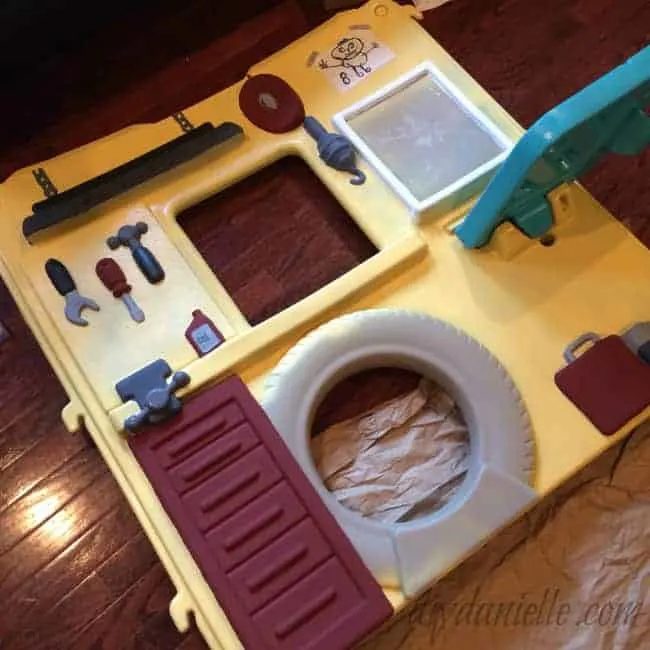
How to declutter your home and stay ecofriendly.
This post may contain affiliate links which may earn me commissions should you click through them and take certain actions. As an affiliate for Amazon, Cricut, xTool, Home Depot, and other sites, I earn from qualifying purchases. Please DIY carefully. View my full legal disclosures here.
Please read the whole post so you don’t miss any important information!
The one HUGE obstacle to me decluttering is WORRY about where the items will go. I want to know that they find an ecofriendly home and not end up contributing to waste in a landfill.
I know to some that perhaps it sounds silly. But it’s something I think about so I figure maybe others do too. Fortunately, I’ve discovered that there’s a lot of options for how and where to declutter.
The best part is that you can frequently make money off these items. We declutter at least once or twice a year and I usually try to sell the majority of the items.
Ecofriendly Decluttering Process
Selling Used Items
Usually my first attempt is to sell the item if I think it might be worth enough to make it worth my effort. I try Facebook groups, Craigslist, and eBay. I always make sure to do some research. Furniture, high end clothing or shoes, books, old DVDs, and more can often be sold. Amazon has a trade in program for some electronics.
If I have spent a ton of time decluttering, usually the best option for me is to have a yard sale. It’s just a nice way to sell it all at once. Furniture, particularly wood furniture, should NEVER be thrown away. Wood can be fixed. Broken drawers can be repaired or just left out. Many crafters leave off drawers and use baskets instead. There’s usually someone willing to BUY real wood furniture. If you don’t want to bother selling or moving it, the Habitat for Humanity Restore and other thrift stores will often come pick it up.
But restoring old furniture is a popular hobby and job now so there’s usually a local crafter on the prowl for a new piece. If your piece is very, very damaged, someone may still want intact drawers, knobs, pulls, etc. I’ve redone several pieces of wood furniture such as a bureau I used for our television stand, this Lego desk I redid for my son, this gaming table I made for my husband, and we completely redid this ottoman that my dog chewed apart.
The same goes for a lot of plastic kids’ items, unless there’s substantial damage. Faded paint can be fixed. I repainted an old playhouse that is fantastic, created a Superman Inspired Ride On Car, and fixed up our old Plasmacar with a new coat of paint too.
The playhouse below was sitting by the dumpster at our gym, headed for a landfill. I am often HORRIFIED at what people toss before asking if anyone wants it. So many people would have loved to have this item, even without the updates. I was able to replace a lot of the pieces that were missing on it.
Donations
I also love to donate. Sometimes it’s better to donate than to sell for well under the item’s worth. The tax write off is worth it. If you have a lot of items to donate, consider calling the company to see if they will come pick it up.
Giving Items Away to Friends/Family
Check with friends and family to see if anyone needs the item. This is great for clothing, particularly children’s items. I often will bundle one size of children’s clothing in a box or bag, then offer it free on Freecyle. Someone always appreciates the clothing.
Upcycling
When you’re looking at your stack of items to declutter, consider if you might need that item if it were repurposed. For example, I HATE tossing sippy cups. I will recycle the tops (plastic), but the bottoms I save for other purposes. They’re great for scooping dog, bird, or other pet food.
Clothing that is worn in only a few areas can be laundered well, then cut apart and saved for rags to clean with, used to create new (smaller) clothing for children or pets, and more. I also braid together fabric to make braided baskets. Ask in your area to see if there’s anyone place that needs the rags… apparently a local school near us collects old clothing to use as rags.
You may not need that bureau, but what if you transformed it? Did you want a kitchen island? Could that bureau be turned into kitchen island?
Composting
I love to compost items that are paper or otherwise are compostable. I even compost some fabrics from clothing if the fabric isn’t reusable and made with natural fibers. Just realize that if the fabrics are cut into strips, they’ll compost down faster. And synthetic fibers shouldn’t be composted.
Recycling
Recycling is my last option before I put things in the garbage. Paper, plastic, aluminum and glass all go into the recycling as appropriate. Don’t forget that electronics can be recycled at some stores. You might be able to sell a more expensive item for working parts, particularly if you have the skills to take it apart yourself. Of course, the best option is always to avoid the clutter in the first place. Buy consciously. Buy what you need.
I hope this post was helpful. I have more posts that will address these topics this month, in particular about how you can upcycle clothing. Looking forward to seeing you back tomorrow!
Please share and pin this post!


